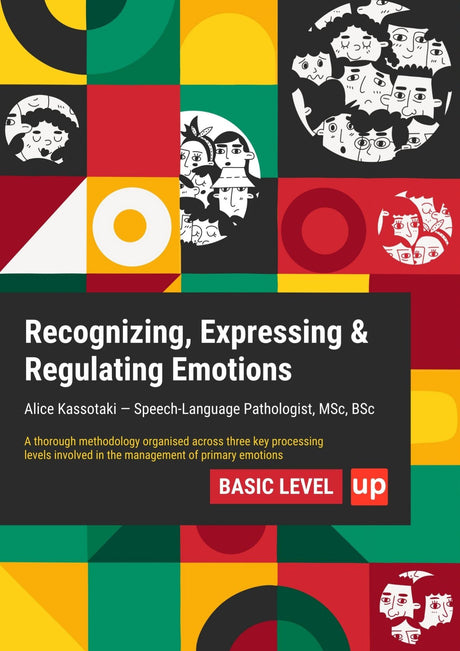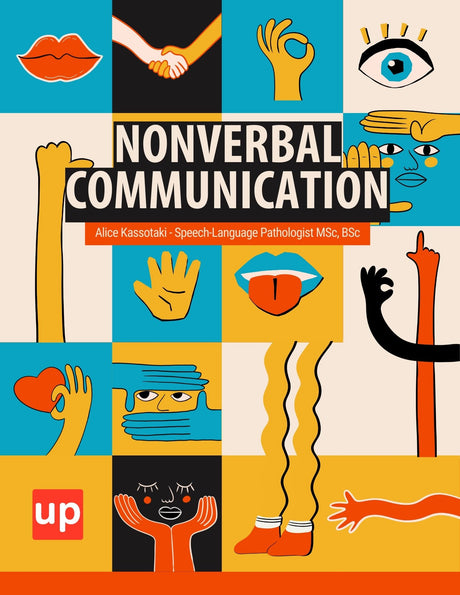Movement is the language of childhood—a universal way of exploring, learning, and connecting with the world. For many autistic children, however, the path from thought to action can be complex. The ability to conceive, plan, and execute a sequence of movements, a skill known as motor planning, can present unique challenges. These difficulties are not a reflection of a child's desire or intelligence but rather a difference in their brain wiring and sensory processing. This article will explore the world of motor planning for individuals on the autism spectrum, offering a comprehensive guide to activities that are not only effective in building fundamental motor skills but are also designed to be engaging, joyful, and confidence-boosting. By embracing purposeful play, we can help unlock a child's potential, transforming challenges into triumphs one playful step at a time.
Key Points
- Motor planning activities for autism are essential in helping children on the autism spectrum develop both fine and gross motor skills, enabling them to perform everyday activities with greater independence and confidence.
- Incorporating fun, engaging, and individualized approaches—such as obstacle courses, animal walks, and ball games—can encourage motor planning while also supporting social skills and reducing anxiety.
- Occupational therapy plays a crucial role in addressing motor planning challenges by providing tailored strategies that integrate sensory input, promote motor development, and empower children to succeed in daily living and social interactions.
Understanding Motor Planning Activities for Autism and Their Unique Role in Autism Spectrum Disorder

Motor planning, or praxis, is the brain’s ability to coordinate the body to perform an unfamiliar action. It’s the invisible work that happens before we tie a shoe, catch a ball, or navigate a crowded room. For individuals on the autism spectrum, a neurodevelopmental disorder that affects communication, social interaction, and sensory processing, this internal process can be significantly impacted. Even a simple task, such as rolling a ball or stepping in and out of a box, can become challenging for children with autism. Research underscores this connection, with some studies indicating that approximately 87% of autistic individuals exhibit motor difficulties that affect their daily lives.
Introduction to Motor Planning: Laying the Foundation
Motor planning, also known as praxis, is a foundational skill that enables children to plan, organize, and carry out physical movements with purpose and efficiency. This process involves more than just moving muscles—it requires the brain to receive and interpret sensory information, solve problems, and create a step-by-step plan for action. Whether a child is learning to write their name, button a shirt, or navigate a playground, effective motor planning is what allows them to develop motor memories and quickly recall how to perform these tasks in daily routines.
For children, especially those on the autism spectrum, mastering motor planning is essential for academic success, building social interactions, and gaining independence in daily living skills. When children can confidently plan and execute movements, they are better equipped to participate in classroom activities, join in play with peers, and manage self-care tasks. By understanding the importance of motor planning, parents, caregivers, and occupational therapists can work together to support children in developing this crucial skill, setting the stage for lifelong learning and growth.
Decoding Motor Planning (Praxis): Ideation, Sequencing, and Execution
Praxis is a three-step cognitive process that allows us to interact with our physical environment effectively:
- Ideation: This is the “what to do” phase. It involves conceptualizing an idea or understanding the purpose of an object or task. For example, seeing a ball and understanding that it can be thrown, bounced, or kicked.
- Sequencing: This is the “how to do it” phase. The brain organizes the necessary steps in the correct order to achieve the goal. To throw the ball, one must first grasp it, then pull the arm back, shift weight, and finally release it.
- Execution: This is the “do it” phase, where the brain sends signals to the muscles to carry out the planned sequence. This requires body coordination, timing, and force modulation to perform the movement smoothly. When motor planning is successful, it leads to coordinated motor actions that allow children to effectively complete tasks like throwing, bouncing, or kicking a ball.
A breakdown in any of these stages can result in a motor planning challenge.
How Autism Spectrum Disorder Can Impact Motor Planning
For many autistic children, the connection between mind and body can feel disjointed. This is not due to muscle weakness or a lack of muscle strength, but rather the way the brain organizes and sends movement signals. Challenges may manifest as difficulty imitating actions, learning new physical games, performing multi-step self-care tasks like dressing, or adapting movements to new situations. This motor impairment can impact everything from handwriting (a complex fine motor skill) to participating in playground games, which require dynamic gross motor skills and quick adjustments.
The Crucial Connection: Sensory Processing, Sensory Integration, and Motor Planning
The sensory system is the foundation of motor planning. To plan a movement, the brain must first receive and interpret sensory information from the environment and from within the body itself. Many individuals with autism spectrum disorder experience sensory processing issues, where the brain struggles to manage the constant flow of sensory input. In fact, studies suggest that sensory processing difficulties are present in over 90% of children with autism.
When sensory information is not processed reliably, it can lead to an inaccurate "body map," making it difficult to plan and execute movements. Sensory integration techniques, often used in occupational therapy, focus on providing structured sensory input to help the brain better organize this information, thereby improving motor planning capabilities.
Addressing Common Motor Challenges: From Awkwardness to Intentional Movement
Motor challenges in autism can range from subtle to significant. A child might appear clumsy, have an unusual gait, struggle with balance, or have difficulty manipulating small objects. Starting with simple ideas and taking the beginning step can help build confidence and lay the foundation for further skill development. The goal of motor planning activities is to bridge the gap between intention and action. By providing repeated, joyful, and varied movement experiences, we help strengthen the neural pathways that support ideation, sequencing, and execution, transforming awkward movements into confident, intentional actions, and improving gross motor skills.
Cognitive Functions and Motor Planning: The Brain-Body Connection
The ability to plan and execute movements is deeply connected to cognitive functions such as executive control, memory, and attention. Motor planning relies on the brain’s capacity to process sensory information, make decisions, and coordinate the body’s actions. When children experience motor planning difficulties, as seen in developmental coordination disorder (DCD), these challenges can extend beyond physical movement to impact problem-solving, memory, and even social interactions.
Children with DCD or similar motor planning challenges may struggle to remember the steps involved in a task, organize their actions, or adapt to new situations. This can make learning new skills and participating in group activities a considerable challenge. Occupational therapy plays a vital role in supporting these children by providing individualized strategies that target both cognitive functions and motor planning. Through tailored interventions, occupational therapists help children develop new skills, improve their ability to process sensory information, and build confidence in social interactions. Recognizing the close relationship between the brain and body allows caregivers to better support children as they overcome motor planning difficulties and achieve their full potential.
The Power of Play: Why "Enjoyment" Accelerates Skill Development

For any child, but especially for autistic children, play is not just a pastime; it is the primary engine of learning. When an activity is fun, a child’s brain is more receptive, their motivation soars, and their willingness to persist through challenges increases dramatically. For motor planning, where tasks can be frustrating, infusing activities with joy is a non-negotiable strategy. Presenting activities in a fun and engaging way can further accelerate skill development and make learning more effective.
Motivating Engagement: Making Learning Irresistible
Engagement is the key that unlocks learning. By tapping into a child’s specific interests—whether it’s dinosaurs, trains, or superheroes—we can transform a therapeutic exercise into an exciting adventure. A simple ball toss becomes a game of “meteor catch,” and an obstacle course transforms into a “superhero training ground.” This approach respects the child’s individuality and leverages their intrinsic motivation. By doing so, it can enhance a child's ability to participate in and benefit from motor planning activities.
Building Confidence and Reducing Anxiety Through Joyful Movement
Motor planning difficulties can be a source of anxiety and low self-esteem. When a child struggles to keep up physically with peers, they may withdraw from social interaction. Joyful, successful movement experiences create a positive feedback loop. Each small victory—climbing over a pillow, catching a beanbag, completing a puzzle—builds a foundation of self-efficacy. Play reduces the pressure to perform perfectly and creates a safe space to experiment, make mistakes, and try again. Activities that encourage imitation, such as dance or pretend play, can help children build confidence and learn new skills.
Fostering Intrinsic Motivation for Lifelong Skill Growth
When a child learns to love moving their body, they are more likely to seek out physical challenges independently. The goal is not just to teach a specific motor skill but to foster a positive relationship with physical activity. This intrinsic motivation is crucial for developing the fundamental motor skills needed for sports, hobbies, and lifelong health and independence, as well as supporting the development of motor planning skills essential for daily tasks and long-term independence.
Gross Motor Planning Powerhouses: Activities for Major Movements and Body Coordination

Gross motor skills involve the large muscles of the body used for walking, running, jumping, and balancing. Gross motor activities and gross motor tasks are essential for building body awareness, strength, and coordination. Many gross motor tasks can be incorporated into daily routines to help children develop these skills. Physical activities like jumping, running, and climbing not only build strength but also help develop leg muscles and develop balancing skills.
Dynamic Obstacle Courses: Navigating the Environment with Purpose
Obstacle courses are a fantastic and versatile tool. They require a child to plan and sequence a series of different actions, helping them create and follow a motor plan.
- How to: Use pillows to crawl over, chairs to crawl under, tape lines to walk on, and laundry baskets for a beanbag toss. For marking lines to walk or balance on, use painter's tape on the floor to create clear, safe paths.
- Skills: Sequencing, problem-solving, body coordination, adapting movements, and developing the ability to create and follow a motor plan.
- Tip: Start simple and gradually add complexity. Let the child help design the course to boost engagement.
Imaginative Animal Walks: Embodying Movement and Bilateral Coordination
Animal Walks are a playful way to build core strength, coordination, and provide powerful sensory input.
- How to: Encourage bear walks (hands and feet), crab walks (scuttling backward), and frog jumps (deep squats to explosive jumps).
- Skills: Bilateral coordination (using both sides of the body together), core strength, and proprioceptive input (body awareness).
- Tip: Create a "journey" through the jungle or across a pond to make it a narrative adventure.
Engaging Ball Games: Precision, Prediction, and Hand-Eye Coordination
Simple ball games are excellent for developing a range of motor skills.
- How to: Start with rolling a large, soft ball back and forth. Progress to a gentle ball toss, catching with two hands, and eventually kicking or bouncing.
- Skills: Hand-eye coordination, visual tracking, important eye tracking skills, timing, and predicting movement.
- Tip: Use balloons or beach balls for beginners, as their slower movement provides more time for motor planning.
Balance and Agility Challenges: Enhancing Stability and Spatial Awareness
Activities that challenge balance help improve core stability and the body’s sense of its position in space. These activities also help children learn to recover from losing balance.
- How to: Use a low balance beam, walk along a line of tape on the floor, or create stepping stones with paper plates or pillows. Have the child stand motionless with eyes closed to test balance, and practice standing on one foot to improve balance and coordination.
- Skills: Balance, spatial awareness, and postural control.
- Tip: Start with support (holding a hand) and gradually encourage independence as confidence grows.
Fine Motor Planning & Precision: Activities for Detailed Tasks and Dexterity
Fine motor skills involve the small muscles in the hands and fingers and are crucial for writing, dressing, and other self-care tasks. Fine motor skill development is essential for fostering independence and supporting children's ability to perform daily living activities.
Puzzles and Building Blocks: Constructing Skills and Spatial Reasoning
Manipulating objects builds hand strength and precision.
- How to: Offer large-knob puzzles, interlocking blocks (like LEGOs or Duplos), and threading beads.
- Skills: Fine motor control, visual-motor integration, spatial reasoning, and problem-solving.
- Tip: Choose puzzles and blocks that align with the child’s interests to maintain focus and engagement.
Creative Art and Craft Activities: Expressing Through Intentional Action
Art provides a fun, low-pressure way to practice fine motor planning.
- How to: Start with simple tasks like drawing or coloring to build confidence and motor planning. Use playdough to roll, pinch, and sculpt. Practice with child-safe scissors to cut lines or simple shapes. Finger painting provides a wonderful tactile experience.
- Skills: Hand strength, pincer grasp, hand-eye coordination, and bilateral coordination (using one hand to hold the paper while the other cuts or draws).
Mastering Self-Care Tasks: Everyday Motor Planning for Independence
Daily routines are a built-in opportunity to practice motor planning and daily tasks to build independence.
- How to: Break down tasks like buttoning a shirt, zipping a jacket, or using utensils into small, manageable steps. Use visual aids or backward chaining (where you do most of the task and the child completes the final step). Use these opportunities to teach daily living skills.
- Skills: Sequencing, fine motor dexterity, and functional independence.
Integrating Sensory Input for Enhanced Motor Planning
Because of the deep connection between sensory and motor systems, integrating targeted sensory input can significantly improve motor planning outcomes. Certain activities, such as trampoline jumping, provide excellent sensory input that can help organize and calm the nervous system.
Proprioceptive Power: Sensing Your Body and Building Awareness
Proprioception is the sense of body awareness that comes from receptors in our muscles and joints. Activities that provide deep pressure are calming and organizing.
- Activities: Pushing or pulling a weighted wagon, carrying a stack of books, Animal Walks, and tight hugs.
Vestibular Adventures: Cultivating Balance and Spatial Orientation
The vestibular system, located in the inner ear, governs our sense of balance and movement.
-
Activities: Swinging on playground equipment, spinning slowly in a chair, rolling down a gentle hill, and using a balance beam.
Tactile Explorations: Feeling the World and Informing Movement
The tactile system provides information through touch.
-
Activities: Playing with sand, water, or playdough; finger painting; and finding objects hidden in a bin of rice or beans.
Preventing Sensory Overload: Strategies for a Positive Experience
It's crucial to be mindful of the child's sensory threshold. Introduce new sensory experiences gradually, watch for signs of distress (like covering ears or withdrawing), and provide a quiet, calm space for breaks. The goal is to provide organizing sensory input, not to cause sensory overload.
The Role of Occupational Therapy: Guiding Progress and Empowering Families

Occupational therapy is a cornerstone in helping children with motor planning challenges, especially those on the autism spectrum, reach their developmental milestones. Occupational therapists use play-based approaches to make learning new motor skills—both fine and gross motor—fun and engaging. By incorporating activities that improve hand-eye coordination, balance, and overall motor development, therapists help children learn essential daily living skills such as dressing, feeding, and using utensils.
Therapy sessions are designed to be enjoyable, ensuring that children are motivated to participate and practice new skills. Occupational therapists also provide families with practical strategies and activities to continue progress at home, promoting consistency and reinforcing learning. This individualized support empowers parents and caregivers to become active partners in their child’s development, fostering independence and boosting confidence. By focusing on both motor planning and daily living skills, occupational therapy not only addresses immediate challenges but also lays the groundwork for academic success and lifelong self-sufficiency.
Addressing Developmental Coordination Disorder: Understanding Overlapping Challenges
Developmental coordination disorder (DCD) is a motor planning disorder that can significantly affect a child’s ability to perform everyday physical tasks. Children with DCD often face difficulties with coordination, balance, and fine motor skills, which can impact their participation in school, play, and social interactions. These challenges may also overlap with sensory processing issues and cognitive difficulties, making daily routines and learning new skills even more complex.
Occupational therapy is essential in supporting children with DCD, offering individualized interventions that target motor planning, gross motor development, and fine motor skills. Therapists work closely with families to develop strategies that improve coordination, enhance daily living skills, and promote healthy development. Early intervention and parent-child interaction therapy can make a significant difference, helping children build the foundational skills needed for academic success and positive social interactions. By understanding the unique challenges associated with DCD and prioritizing motor planning, caregivers can empower children to overcome obstacles, develop confidence, and achieve their fullest potential.
Designing Engaging Activities: Practical Recommendations for Parents and Caregivers
Start Small and Gradually Build Up Skills
Break down complex skills into the smallest possible steps. Celebrate effort and small successes to build momentum and confidence. If a child is struggling, simplify the task.
Follow Your Child's Interests: Motivation is Key
Incorporate their passions. If they love space, activities can be about training to be an astronaut. If they love cars, the obstacle course can be a racetrack. Their enthusiasm will be your greatest asset.
Use Visual Supports and Clear, Concise Instructions
Many autistic children are strong visual learners. Use pictures, diagrams, or modeling to demonstrate an activity. Keep verbal instructions short and to the point to avoid overwhelming their processing capacity.
Conclusion
Improving motor planning is a journey, not a destination. It is a process built on patience, creativity, and the power of connection. By focusing on activities that are inherently joyful and tailored to a child's unique interests and sensory needs, we do more than just build skills—we build confidence, foster independence, and nurture a love for movement that can last a lifetime. The activities outlined here are not just therapeutic exercises; they are invitations to play, explore, and connect. Through this purposeful play, we can empower autistic children to navigate their world with greater ease and confidence, helping them translate their brilliant ideas into purposeful, successful actions.
Frequently Asked Questions
What are motor planning activities for autism?
Motor planning activities for autism are exercises designed to help children on the autism spectrum develop the ability to plan, sequence, and execute physical movements. These activities support both fine and gross motor skill development, enabling greater independence and confidence in daily tasks.
Why is motor planning important for children with autism?
Motor planning is crucial because it allows children to perform everyday movements smoothly and efficiently. For autistic children, challenges in motor planning can affect their ability to participate in play, school activities, and self-care tasks, making it essential to support these skills early on.
How can gross motor activities benefit children with autism?
Gross motor activities help build large muscle strength, improve balance, coordination, and spatial awareness. They also provide sensory input that can reduce anxiety and enhance social skills through interactive play.
What role does occupational therapy play in improving motor planning skills?
Occupational therapy provides individualized support through tailored activities that incorporate sensory integration and motor skill development. Therapists help children practice and automate movements, boosting their confidence and independence.
How can parents incorporate motor planning activities at home?
Parents can use simple, fun activities such as obstacle courses, animal walks, ball games, and dance to encourage motor planning. Breaking tasks into small steps and using visual supports can make activities more accessible and engaging.
Are motor planning difficulties related to other developmental challenges?
Yes, motor planning difficulties often overlap with sensory processing issues and developmental coordination disorder (DCD). These challenges can also affect cognitive functions and social interactions, highlighting the need for comprehensive support.
How can play enhance motor planning development?
Play creates a joyful and motivating environment for children to practice movements. Engaging in play-based activities encourages imitation, problem-solving, and social interaction, all of which contribute to improved motor planning skills.
What are some examples of fine motor activities for autistic children?
Fine motor activities include puzzles, building blocks, drawing, cutting with scissors, and self-care tasks like buttoning shirts. These help develop hand-eye coordination, precision, and dexterity.
How do sensory processing and motor planning connect?
Sensory processing provides the brain with information about the body and environment, which is essential for planning movements. Difficulties in sensory integration can disrupt motor planning, making sensory-based interventions beneficial.
When should parents seek professional help for motor planning challenges?
If a child shows persistent difficulties with coordination, balance, fine motor tasks, or struggles with daily living activities, it is advisable to consult occupational therapists or pediatric specialists for assessment and support.
Original content from the Upbility writing team. Reproducing this article, in whole or in part, without credit to the publisher is prohibited.
References
-
American Occupational Therapy Association. (2020). Occupational therapy’s role in autism spectrum disorder. Retrieved from https://www.aota.org/About-Occupational-Therapy/Professionals/PA/Facts/Autism.aspx
-
Blank, R., Smits-Engelsman, B., Polatajko, H., & Wilson, P. (2019). European Academy for Childhood Disability (EACD): Recommendations on the definition, diagnosis, and intervention of developmental coordination disorder (long version). Developmental Medicine & Child Neurology, 61(3), 242-285.
-
Case-Smith, J., & Arbesman, M. (2008). Evidence-based review of interventions for autism used in or of relevance to occupational therapy. American Journal of Occupational Therapy, 62(4), 416-429.
-
Fournier, K. A., Hass, C. J., Naik, S. K., Lodha, N., & Cauraugh, J. H. (2010). Motor coordination in autism spectrum disorders: A synthesis and meta-analysis. Journal of Autism and Developmental Disorders, 40(10), 1227-1240.
-
Miller, L. J., Anzalone, M. E., Lane, S. J., Cermak, S. A., & Osten, E. T. (2007). Concept evolution in sensory integration: A proposed nosology for diagnosis. American Journal of Occupational Therapy, 61(2), 135-140.
-
Polatajko, H. J., & Cantin, N. (2005). Motor learning and motor control: A neurodevelopmental perspective. In J. Case-Smith & J. C. O'Brien (Eds.), Occupational therapy for children (5th ed., pp. 337-374). Mosby.
-
Provost, B., Lopez, B. R., & Heimerl, S. (2007). A comparison of motor delays in young children: Autism spectrum disorder, development delay, and developmental concerns. Journal of Autism and Developmental Disorders, 37(2), 321-328.
-
Schaaf, R. C., & Mailloux, Z. (2015). Clinician’s guide for implementing Ayres Sensory Integration: Promoting participation for children with autism. Jessica Kingsley Publishers.
-
Wilson, P. H., Ruddock, S., Smits-Engelsman, B., Polatajko, H., & Blank, R. (2013). Understanding performance deficits in developmental coordination disorder: A meta-analysis of recent research. Developmental Medicine & Child Neurology, 55(3), 217-228.









